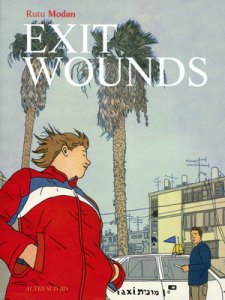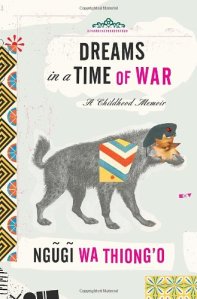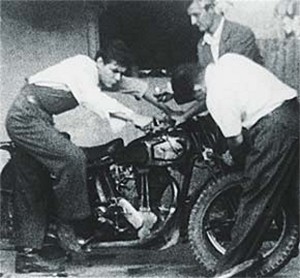Long time, no post! Since I abandoned my blog sometime during the spring semester, I figured it’d be the most logical to recap the semester before moving the blog forward. And what better way than through highlighting the best of the best from Spring 2011–here are the Top 5 Books I read this past semester, along with why I loved them, and why you should read them!
5. The House on Mango Street by Sandra Cisneros
Why you should read it: It’ll only take you a day.
The House on Mango Street has long been considered a classic piece of young adult fiction, and I regret having not read it sooner. Like, 7 or 8 years sooner. This book was required reading for my English Methods class, and we did some literature circles and other engaging activities that would have been a treat back when I was an awkward adolescent. Since I read this book in the context of teaching it, of course I’d recommend it for any teacher or prospective teacher as potential material for English classrooms. The vignette-style narratives are easily photocopied and reproduced for classroom use (i.e. your students can enjoy it without having to obtain a classroom set) and it’s not a difficult read but still blossoming with unique style, theme and symbolism, so it makes a great choice for a class with ELLs or students that read on a lower level.
But teaching methods aside, The House on Mango Street is powerful without being heavy, witty without being weighty…and short, which means there’s no excuse NOT to read it. And make your little sister read it. And her friends.
 4. The Dark Knight Returns by Frank Miller
4. The Dark Knight Returns by Frank Miller
Why you should read it: You can’t judge comic books as a literary genre until you have.
Like The House on Mango Street, The Dark Knight Returns is a book I should have read in middle school. I don’t know how flexible it is in terms of classroom use (although it’s certainly something to think about), but it falls into the same realm of “fun to read and fun to think about.” You know, that awesome middle ground between War and Peace and Twilight.
I read The Dark Knight Returns for my graphic novels class last semester with Professor Mark Sample. There were a lot great texts that we explored in this class, and believe me, it was hard enough just to narrow it down to the two that I included on this list. But The Dark Knight Returns stood out to me mostly because of it’s artistic style. Also, I naturally have a soft spot for urban/dystopian settings in fiction, and I always enjoy when writers are able to explore setting as a character, rather than just “the random place where I decided all this stuff would happen.” Gotham City is just as important to the Batman comics as Batman himself–almost all of Miller’s sociopolitical commentary that the novel is heralded for can be found in his construction and criticism of this urban dystopia.
3. Exit Wounds by Rutu Modan
Why you should read it: When was the last time you read a book set in Israel? (The Bible doesn’t count, btw.)
This is another I read for my graphic novels course, and I’m a little surprised to discover that it’s my favorite from the class. One important revelation I made about graphic novels and comics throughout the semester was how graphic novels can really capitalize on perspective in ways that traditional novels can’t. I think Exit Wounds is an interesting example of this–mostly because I haven’t read anything in recent memory that provides an Israeli perspective. Not everyone in my class found this book as rewarding as I did, but I think the key is to try to understand the characters as being from a particular time and place.
As a young, middle-class American, I’ve had the privilege of living in a very sheltered world, free of deadly violence and far removed from the daily tragedies of war. My only experience with such horrors has come vicariously through movies and books, which have had a profound effect on me, mostly because they make me realize how lucky I am to live in such peaceful existence. Exit Wounds can be added to such books, and I think the most rewarding way to read this text is by remembering that these characters live in a world that is not at all like our own, but still very real (and very real to many people all across the globe). It’s impossible to imagine living in a place where suicide bombings are an almost regular occurrence, to the point where you and your community have become hardened to such tragedies. That’s the setting of Exit Wounds, and if you keep that in mind during your reading, you’ll find this book to be a treasure–Rutu Modan invites you into the world of a young, Israeli middle class, and it’s insightful and educational to pick up on the subtle differences between their world and our own.
2. Dreams in a Time of War: A childhood memoir by Ngugi wa’Thoing’o
Why you should read it: Because you don’t know anything about colonial East Africa.
Going along the lines of non-Western perspectives, Ngugi wa Thoing’o’s memoir invites us into his childhood, which was shaped by both the beauties and the horrors of the ‘Mau Mau revolution.’ Wa Thoing’o’s story is valuable, as it offers a narrative that not many people can tell–a narrative which many have not heard.
English is not the author’s first language, but this allows him to craft it in ways that make the prose more appealing. For example, he is able to do what many non-native English speakers can do in their writing: he borrows from the structure of his native language to create prose which is unique and subtle differences in phrasing allow him to frame ordinary observations as extraordinary insights. Dreams in a Time of War is both a history lesson, a coming-of-age story, a chance to expand your worldview and overcome essentializations, and it manages to be all of these things while still being an easy read. This would be an interesting selection for a summer reading list for AP World History or a similar class.
P.S. If you do end up reading this novel, please let me know, because I’d like you to read the adaptation for theater that I wrote for my final project in my Cosmopolitan East Africa class.
1. Leaving Atlanta by Tayari Jones
Why you should read it: So you can thank me forever for introducing you to Tayari Jones.
Tayari Jones is the best writer you’ve never heard of. You might think I’m over-exaggerating (or underestimating–maybe you have heard of her), but I will say that she’s the “best writer I’ve never heard of until reading her for a college course,” which hopefully says a lot, considering I’m an English major and prefer to sign up for courses that explore non-canonical texts.
Leaving Atlanta is, put quite simply, a book about a lot of things. The class I read it for was titled Southern Fiction, and indeed, it offers a Southern narrative that is critical as well as fictional. But it’s also about the very real Atlanta child murders, which spanned from roughly 1979 until 1981, and left over twenty children dead. It’s a story about race relations, a story about Atlanta, and a very ambitious coming-of-age story about broken childhoods.
Tayari’s writing is masterful given that it addresses a variety of touchy subjects and realities, but does so through the eyes of young children, and Jones is able to make it work. Even more exciting, from a literary standpoint, is her exploration of first, second, and third-person perspective technique. There’s an entire section devoted to second-person narrative, and Tayari makes it look easy. Think about that for a little bit, and then realize that you need to treat yourself to this author’s groundbreaking first novel so you can continue to follow her work (she’s written two books since Atlanta, and I’m sure she has a lot of great stuff in store for her readers yet).
For the record, this list was really difficult to make. And of course, there’s a lot more to say about all of these books that I haven’t included here (hell, I wrote an entire theatrical adaptation of Dreams in a Time of War for my final for that class–I could probably go on about it for another 500 words at least.) But other good’ns: Tobacco Road by Erskine Caldwell, which I wrote an 8-page critical analysis on for my Southern Fiction class, along with We3 by Grant Morrison and Frank Quitely. I might have to do them justice and write separate blogposts on them later!







